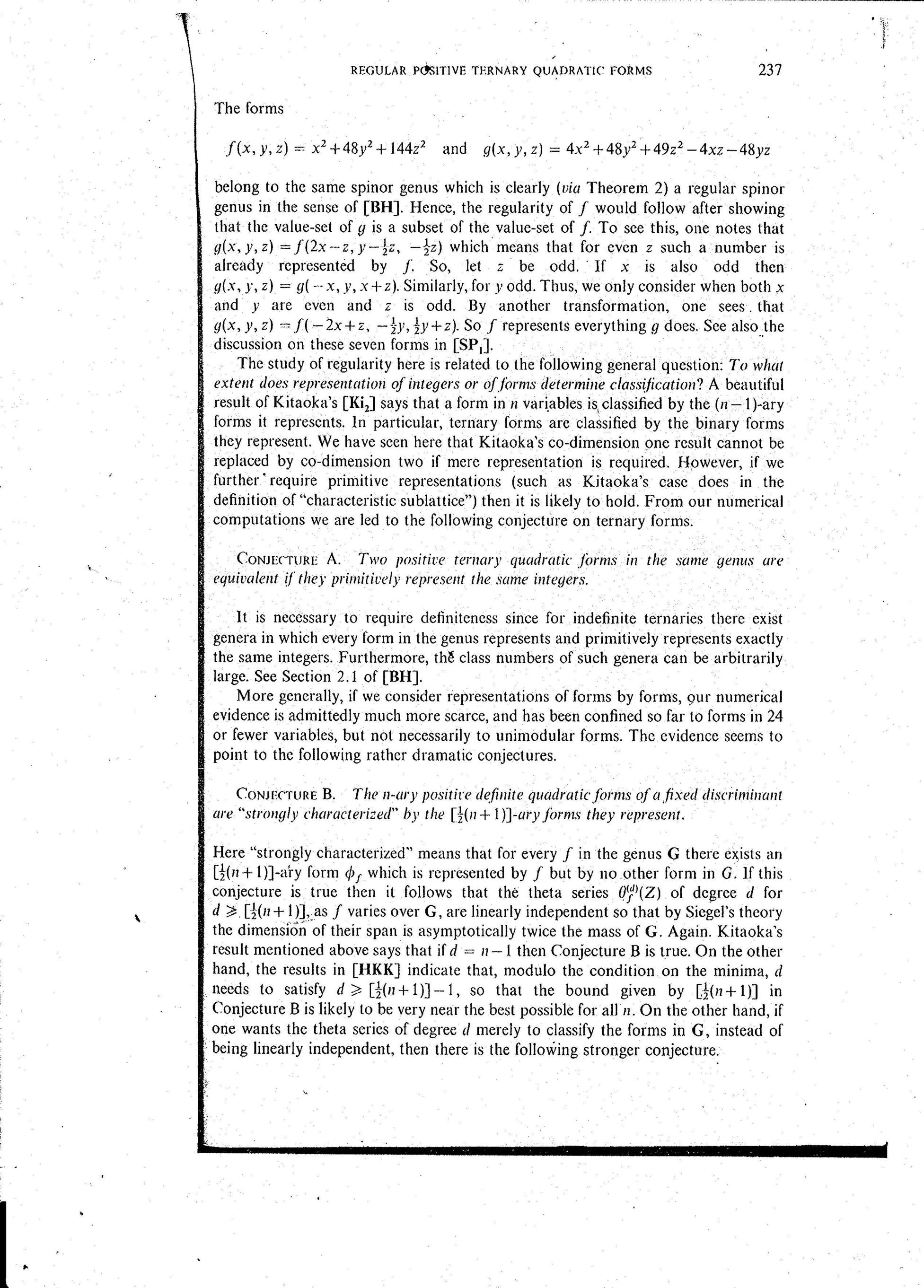NOTE, September 2017: I also checked the two pairs of forms I found for primitive representations. In both cases, the pair of forms in each genus primitively represent the same numbers up to a large bound. If ever proved, these examples violate Conjecture A on page 237, Regular Positive Ternary Quadratic Forms, J. S. Hsia, Mathematika, volume 28, (1981), pages 231-238.Conjecture A on page 237, Regular Positive Ternary Quadratic Forms, J. S. Hsia, Mathematika, volume 28, (1981), pages 231-238.

